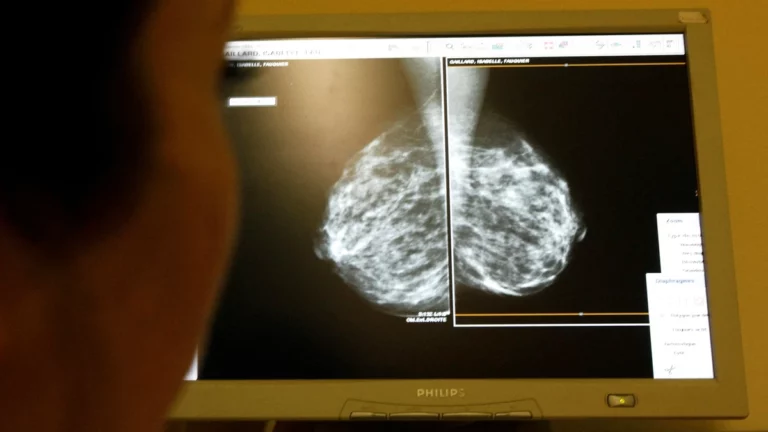Research and treatment protocols for cancer have gained pace in the last decade. Proper arrangements of cancer research and holding clinical trials are vital to increasing the understanding of how to treat or prevent cancer. Developing new techniques, including using magnetic bacteria for early detection, diagnosing, and treating diseases, and improving support and care services for cancer patients.
Governments and NGOs have teamed up to fight the cancer menace. The funding allocated towards cancer research and treatment has only gone skywards in the last few budgets. This long-term movement helps take societies and generations forward when science finally reaps the rewards. Cancer awareness programs have surfaced all around the globe, and the mission of cancer treatment is strategically arranged on the global level.
ETH Zurich has been one of the torchbearers in this regard and has opened up multiple points of cancer research within its boundaries to accelerate the noble work
The terms cancer and chemotherapy go hand in hand. Today Chemotherapy drugs are used as a standard treatment protocol for cancer patients, depending on their stage. It is one treatment people love to hate depending on which proponent of medicine they believe in. The two main views are that chemotherapy ensures that big pharmaceutical companies profit massively and that the doctors and oncologists who administer them profit equally. Secondly, chemo drugs do not help fighting cancer.
What Makes a Tumor Cancerous?
Cancer refers to the disease where cells develop abnormally and divide uncontrollably. They can infiltrate and destroy normal tissues in the body and can spread in the body. It is the second leading cause of death globally though survival rates have been improving thanks to early cancer screening, prevention, and better treatment protocol.
The abnormal mass of cells in the body is known as a tumor. It is caused when cells divide faster than usual and not dying when required. Tumors are classified as either benign or malignant.
Benign Tumors
They are those tumors that stay at their primary location and do not disturb or invade other body parts. They do not spread locally or to distant body parts. Benign tumors have distinct borders and grow slowly, thus not usually problematic. They can, however, become large and cause pain or other medical complications. They may compress other parts of the body. For example, a benign lung tumor could compress the trachea and cause breathing difficulty. Benign tumors can be removed surgically and do not recur after removal. Common Types of Benign tumors are lipomas in the skin or fibroids in the uterus.
Some specific types of benign tumors can turn malignant. They need to be monitored closely and may require surgical intervention. Colon polyps can become malignant and are usually removed surgically.
Malignant Tumors
- Malignant tumors are cells that divide, grow uncontrollably, and spread in the body. Metastasis can occur in any body part and mainly in the liver.
- Malignant tumors spread rapidly and require either chemotherapy, radiotherapy, or surgery. If cancer spreads, then the treatment is mostly immunotherapy or chemotherapy.
Targeted Chemotherapy
Targeted cancer drugs work when they can see the differentiated cancer cells from others. Often, they do not reach those malignant cells despite best intentions leading to poor prognosis.
Researchers are now working to determine the most effective way for anti-cancer drugs to reach the targeted tumors and treat them. One way is to use modified bacteria to transport through the bloodstream to the tumors.
Researchers at ETH Zurich have been able to control some bacteria successfully so that they can pass through the blood vessel wall and attack the tumor tissue. Researchers were led by Dr. Simone Schürle-Finke, a biomedical engineer, principal investigator, and professor at the Responsive Biomedical Systems Lab in Zurich, Switzerland. Dr. Schurle, a pioneer in magnetic serving technology, and researchers undertook magnetic bacterial therapy experiments with magnetic bacteria due to the iron oxide particles in them. The Magnetospirillum bacteria reacts to magnetic fields and can be controlled and manipulated by external magnets.
How Blood Vessels Work – An Overview
Dr. Schurle and her team have demonstrated in mice and cell cultures how a magnetic field, when applied to the tumor, can boost the ability of bacteria to penetrate and cross the vascular wall around the cancerous region. The magnetic field, when rotating, pushes the bacteria ahead in a circular motion around the vascular wall.
To understand how the blood vessel works, let us look at its mechanism. The wall of the blood vessel consists of layers of cells that act as a barrier between the tumor tissue and the bloodstream. The blood vessels permeate the tumor cells when the narrow gaps between the cells allow some molecules to pass through the wall. The cells of the blood vessel walls determine and regulate the intercellular spaces. They can become wide temporarily to allow bacteria to pass through the blood vessel walls.
High Probability and Strong Propulsion
Researchers at ETH, Zurich, demonstrated with the help of computer simulations and experiments that it can be effective if the bacteria are propelled using a rotating magnetic field.
There are three reasons for the effectiveness of magnetic bacteria.
- The propulsion of the bacteria via the rotating magnetic field is ten times more potent than having propulsion through a static magnetic field. The static magnetic field only sets the direction and makes the bacteria move using their power.
- The second reason is critical, as the rotating magnetic field drives the bacteria here. The rotation makes it constantly in motion and ensures traveling through the vascular wall. This option opens up the possibility for bacteria to encounter gaps that open up between the vessel walls compared to the less explorative motion of the bacteria in the propulsion type.
- Unlike the first and second methods, the bacteria do not require tracking through imaging. Once adjusted over the tumor, the magnetic field does not require repositioning.
Accumulation of “Cargo” in Tumor Tissue
Dr. Schurle explains how they use the autonomous and natural locations of bacteria. Once the bacteria pass through the blood vessels and enter the tumor, they can independently move deeper into its interior. The time is long enough for the bacteria to move efficiently through the vascular wall and reach the tumor.
While studying cell culture, the researchers at ETH, Zurich, simulated the application by attaching liposomes. The tagged fluorescent dyes to the liposomes allow them to demonstrate how a bacterium delivered the “cargo” inside the cancerous tumor tissue. In future medical applications, the attached liposomes will be filled with anti-cancer drugs and delivered to the tumor.
Bacteria to Fight Cancer
Using as ferries, the bacteria transport the anti-cancer drugs is one way of fighting against cancer. The second way is to use the hundred-year-old approach, which is presently seeing a revival. It uses the natural tendency of certain bacterial species to attack and destroy cancer cells. This process can consist of several mechanisms. It is well known that bacteria stimulate specific cells in the human immune system that helps to destroy a tumor.
The use of E. coli bacteria for bacteria cancer treatment against tumors is currently being researched for its efficacy in multiple projects. Nowadays, it is possible to modify bacteria by using synthetic biology and making them more effective, reducing side effects and making the treatment safer and more therapeutic.
Converting Nonmagnetic Bacteria into Magnetic Bacteria
The question is whether by using the bacteria’s inherent properties for cancer treatment, how they can reach the tumor effectively remains. Though it is possible to inject the bacteria directly into tumors located close to the body’s surface, it is not so in the case of those deep inside the body. It is where the macrobiotic control from Dr. Schurle and his team comes in. She says it is possible to use their engineering approach to increase the bacteria’s effectiveness in cancer therapy.
Final Thoughts
Therefore, E. coli bacteria used in cancer studies are not magnetic and cannot be controlled or propelled in a magnetic field. The magnetic response among bacteria, in general, is a rare phenomenon. One of the few genres of bacteria to have magnetic properties is the Magnetospirillum. Dr. Schurle wants to make the E. Coli bacteria also a magnetic bacteria. It will make it possible one day to control E. coli bacteria clinically by using a magnetic field and this therapeutic bacterium effectively.

















